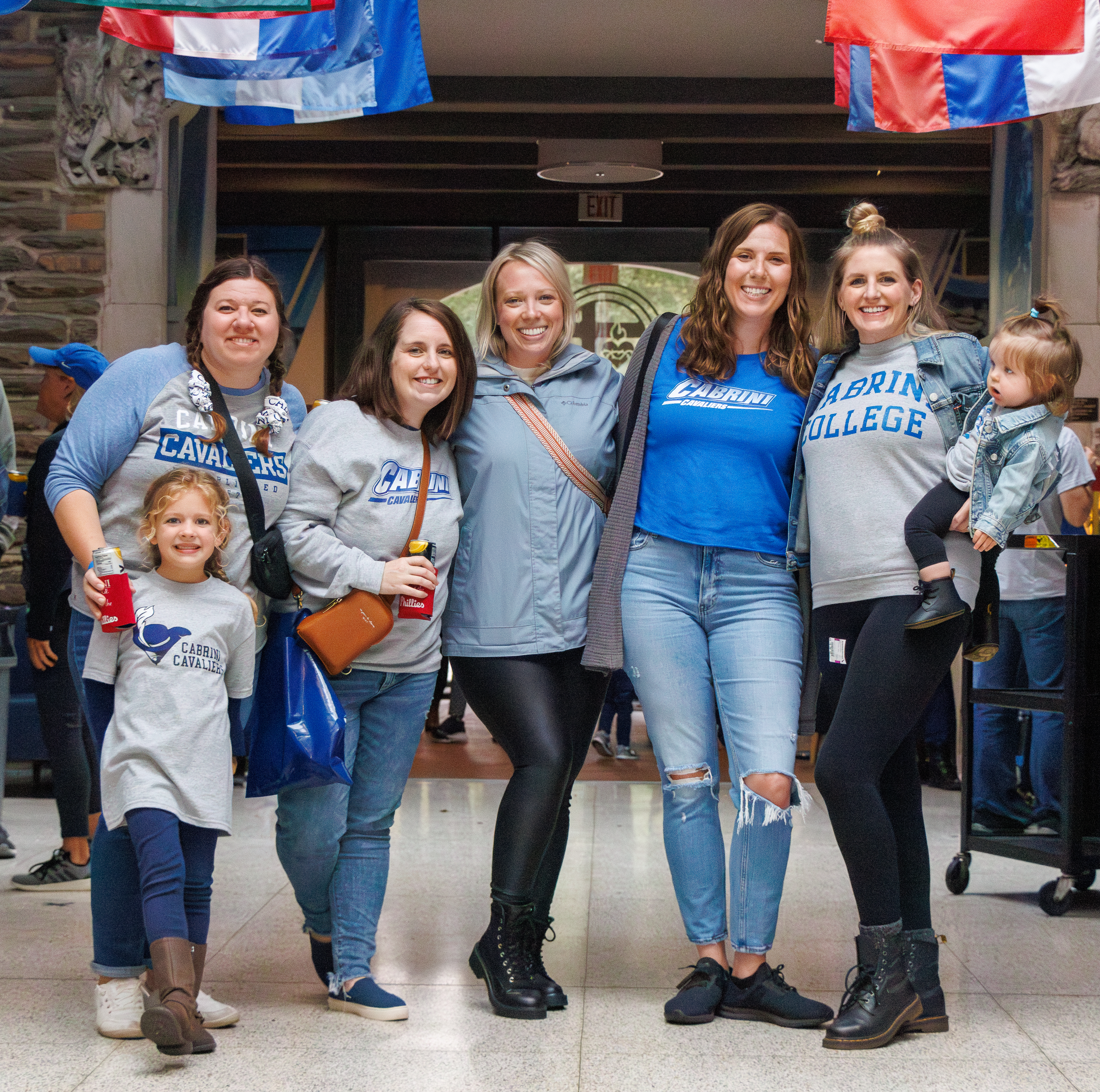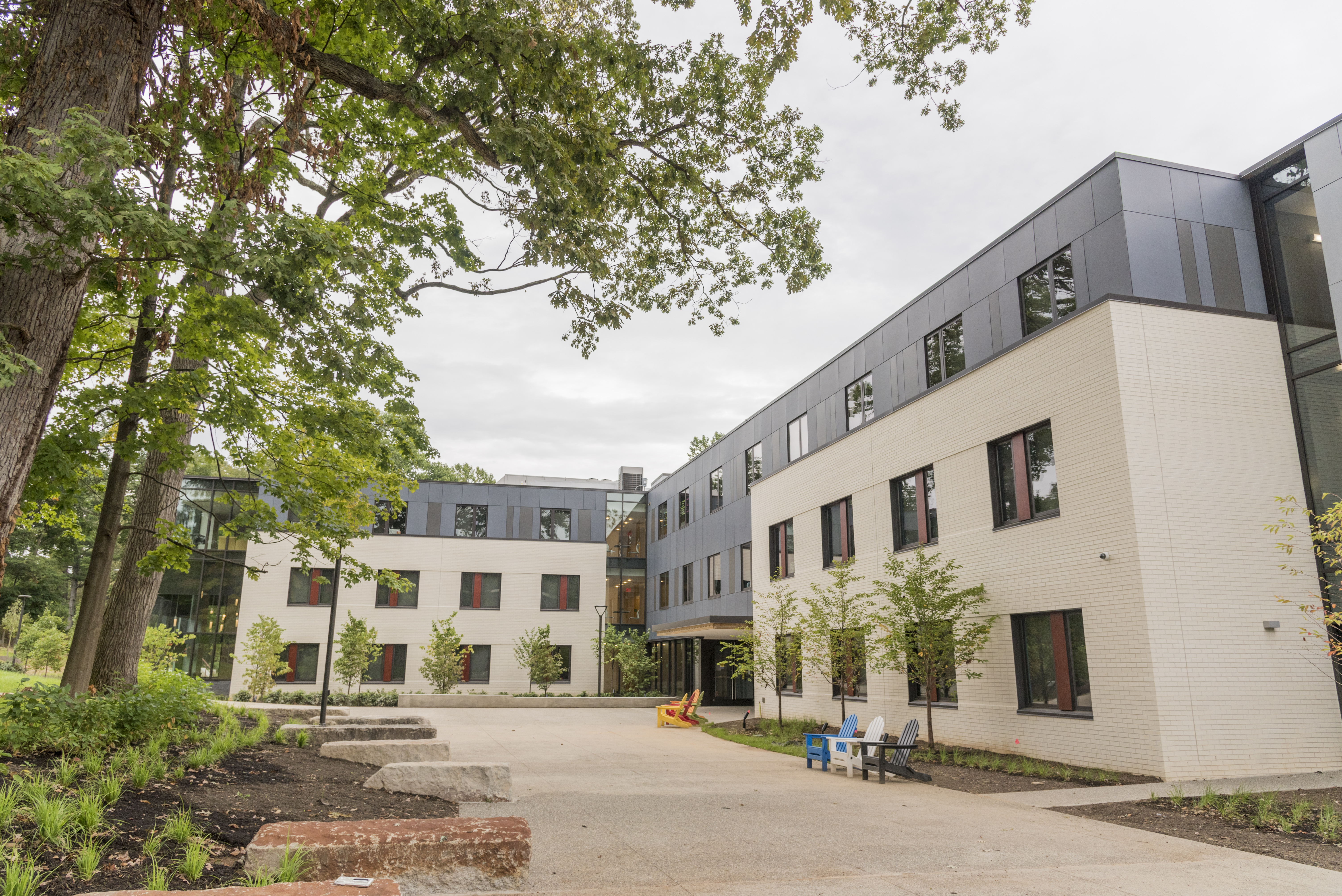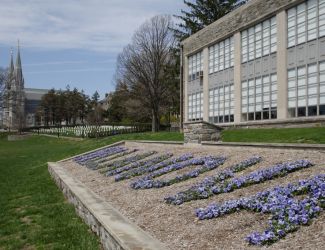As students submit their final exams and head home for winter break, Loquitur’s Editor-in-Chief Chris Perri, and Breaking News Coordinator Jason Fridge met with President Helen Drinan to discuss the semester, the Villanova deal, and goals for Cabrini’s final months.
First semester review
What stood out to you this semester as indicators that the Cabrinian spirit is alive and well?
To start, one of the best moments was when students arrived back to campus. You can imagine it was pretty sober around here all summer. There was sadness, worry, and lots of work trying to get ready to commit to the best possible year for our students knowing that this was the closing year. So, the arrival of students and the spirit they brought was a huge elevation in spirit on campus. I heard from everybody: faculty, staff, people who aren’t Cabrini employees, everybody remarked on what a difference it made for the students to return because students were so upbeat.

The second thing was the level of participation. This is only my second year here, but I could tell from last year more people are going to games, many more people showed up at alumni/fall weekend, and Merry Little Christmas at Cabrini had over 500 RSVPs; we’ve not had that kind of participation in years.
There’s an increasing desire to visit campus. Public safety has been saying people drive onto this campus to park someplace, take out their coffee cups, and just chat observing the place and enjoying the space.
The last thing I’d mention is the kind of enthusiasm we’ve gotten from our partner schools to work with our students. It just says volumes about how much respect there is for this community and for the students and faculty who study and teach here in terms of their desire to say, ‘We’d love to have some of those Cabrini students finish in our institution!’ I think that’s amazing, I really do.
What are some of the major accomplishments?
I have never worked in an academic institution that was closing. I worked in corporations that acquired other organizations or ultimately closed themselves, but not in higher education. I would say the administrative challenges in higher education are many more and far more complicated, and that’s because higher education has so many stakeholders. You have students, faculty, staff, the community in which the organization is situated, other academic institutions that you interact with, alumni, regulators, it just goes on and on. So, you try to take all those stakeholders into account as you start thinking about the aspects of closing a university.
One of the things I learned is, even though we put tons of work into the definitive agreement which we signed months ago, the agreement tells you directionally what we need to do to get to the closing, but it doesn’t tell you how. So you have to figure out how to do all of these things.

I know we will have all this worked out, and we’re making steps every single day to get there. One of the things we are discussing right now is how are we going to provide Villanova with guidance about what’s important to us to remember. This includes names of people who’ve done wonderful things for this institution, historically. We have a building called Iadarola, and Widener, different names that are around here. How many do we want to make sure stay as long as Villanova is around to remember those names?
Stuff that’s a little more challenging, we have a workforce on this campus. We have faculty and staff who will not have jobs when the end of the year comes. It is far easier to guarantee that every student can have a plan than it is to guarantee every employee will have a job. That is a very important administrative function: how do we work with our faculty and staff? We knew going into this we had to announce in August because we wanted our faculty to have the cycle of faculty recruitment. This cycle is in the fall, when institutions identify their openings and faculty members apply for those openings.
The last thing I’d add is we’ve been very deliberate about trying to preserve traditions that are meaningful at Cabrini. We have not dropped any signature events, and we will continue to pursue those for the year.
Background on the closure
When did you know the university had to transition from a partnership agreement to deciding to close?
We had a plan that was approved by our board of trustees in October that had two paths. One was a projection of three years of runway to really be thoughtful about what future alternatives Cabrini University had. The second was starting to talk to other institutions about partnerships. With the three-year runway, I hoped we could build up enough strength that maybe if we couldn’t get to three, we could at least get to two. That would have given us more thinking time than just, ‘We have to make this decision and we have to make it this year.’
I had my first conversations about partnerships way back in August when I first came here. So, I was already out there talking to many people, and some conversations were very sobering. One of these potential partners said, ‘We don’t have those problems and we can’t buy those problems.’ That was really sobering to hear if you’re the person doing the talking on behalf of your institution.

Then I watched the work we were doing to bring in the next class, which was very concerning. We’ve been hearing for years about the birth rate in the United States. You don’t change birth rates, and for the last four years higher education has known this day was coming and frankly hasn’t done much about it. Think about it, we built a new dorm knowing that the birth rate was dropping, and we are not alone in that.
We’re in a place where we have a lot of students who live close to home. We’re not diversified in terms of where we attract our students geographically. So, if something bad is happening in the Northeast, and we’re in the Northeast, and we’re surrounded by people who look a lot like us in terms of a small campus in a beautiful location, we are now fighting with each other for the same decreasing population of people. Not surprisingly, recruiting classes gets harder and harder.
I started thinking a lot over [winter break 2022], ‘What’s the timing here?’ Because we’re gonna get to a point where it’s clear whether or not this incoming class is large enough. A lot of people asked, ‘Why did you recruit this incoming class?’ That’s because it could have gone either way. It’s a slippery slope.
But over the holiday break last year [2022] I started to see a lot of red flags staying up. Add all those things up and by late February, it was very clear to me this was going to be the outcome.
Then the question is, can we make up an arrangement where we don’t have to close right now because I don’t want to be in the position the College of Saint Rose is in now. I wanted this organization to have the runway for a realistic, wholesome year where everybody felt like this was a good year for seniors, for undergraduates to find the next place, and for our workforce to make the best effort towards their transition.
Was there communication between the board of trustees and alumni over possible donations or fundraising to try and avoid closing?
That’s an interesting and challenging question. Giving rates in the United States are very important numbers for schools trying to build for the future. They have been dropping across the country. A lot of people attribute that to the increasing debt students take on as they go to school.
Cabrini’s donor rates have been less than 10%. Schools that have strong alumni bases are in the 30-40% rate. Cabrini’s donor rate has not been high for years. There was no way that even if you tripled the donor rates it would change the economics of Cabrini’s closing.
I understand the emotion and the desire to say, ‘Maybe we could have helped,’ but unless we reconfigured our economics so that we could see ourselves staying in the long term and not just living year to year, it wasn’t in the cards for Cabrini.
What role did the Missionary Sisters play in negotiations with Villanova?
There are four members of the Missionary Sisters on our board, and they are never quiet, they are always forthright. They know what they want, and they articulate that very well. They’ve been clear from the beginning that the legacy of Mother Cabrini and the Missionary Sisters is key to any decision they make.
We have a two-tiered board, which means we have a regular board, where the Missionary Sisters have seats, and we have members, which the Sisters are the only four called members. When a major decision is made about Cabrini University, the board of trustees votes first, and then the members have an additional 30 days to consider the decision on their own right. They have the latitude to say, ultimately, whether something is going to happen or not.
The asset acquisition by Villanova was clearly a decision that they had the ultimate vote on.
One of the things that excited the community when you were named first interim, and then standing president at Cabrini, was your work to bring financial stability to Simmons College. When you stepped into this role, did you believe the university could get back to a stable financial place?
I did. In the beginning, I did. When I took over at Simmons, we had a $30 million deficit. That means we were operating at a deficit for the last three years and were in the hole. I sat on that board when I was first at Simmons and said, ‘Where’s the bottom line?’ Because you don’t necessarily have to have a bottom line.
However, because I had this experience at Simmons when I got here, I thought ‘Maybe this is doable.’ Nobody said to me this was my job, I was asked to simply be interim while they found a new president. But when I looked at the financials, I thought, ‘you know what? Some of these things don’t look good. I’m going to spend some time really diving in.’
Unfortunately, it’s not just the numbers, it’s a look at the strategic plan, what is the effort for new revenue development? If you’re an organization trying to come out of a couple of years of losses, you want to focus on revenue generation, you don’t want it to be part of a larger program if it’s just a part.
That was something I spent a lot of time with the faculty understanding: how near are we saying we could do this? And, at the time, we weren’t talking about this semester, or next year, but right now.
You walk a fine line between alarming and alerting an organization. So, I basically put the entire faculty on alert when I said, ‘We need to find $5 billion.’ And they responded magnificently. Alerting them to the work was important because they needed to understand we were serious about what we could do in the budget. After all, there were multiple efforts to reduce the budget, and some were not as effective as they needed to be.
I put the puzzle pieces together and said, ‘There’s a lot of work to do here. I think it’s doable, but it’s a lot. And it’s not just that I’m looking at a budget with a loss.’
Looking forward
What do you want to accomplish in Cabrini’s final months?
We want 100 percent of our students to have a plan. There may be students who don’t want to have an education plan, but we want to be convinced they’ve made that decision with full-on information about the consequences of not having one. The risk of students not completing their education when an institution closes is exponentially higher, so we want to address that first and foremost.
The second thing is we want to make sure that as many of our current employees get the job they want as soon as possible, and we’re doing everything we can.
The third thing is we want to implement the definitive agreement and make sure those legacy items, the things that are so important about the legacy of Cabrini, are built in.
That’s not in priority order, although I will say students are always first. The people’s issues come first.
This interview was edited for brevity.







Very little outreach by this outsider President to the alumni. Regardless of her assertions nothing was done to alert or include the alumni of the institution with a decision that affects all of their lives. You only need to note her response to the priorities in the final question…no mention of alumni.
She doesn’t bleed Cabrini blue like some many before her did. I don’t blame her, but there is nothing to celebrate here. May Mother Cabrini bless all those who do bleed blue. Clearly this President does not.
John Dzik
Director of Athletics
1980-2005
Go Cavs!
“That was something I spent a lot of time with the faculty understanding”. Drinan didn’t spend any time with the faculty to discuss the future of Cabrini. By faculty, she means Michelle Brown, who had her wish granted by ousting Chioma (a true Cabrinian move to undermine a woman of color and a first generation immigrant) and replacing her, or Jim Cooper who got a vote of no confidence by the faculty and has already jumped this sinking ship.